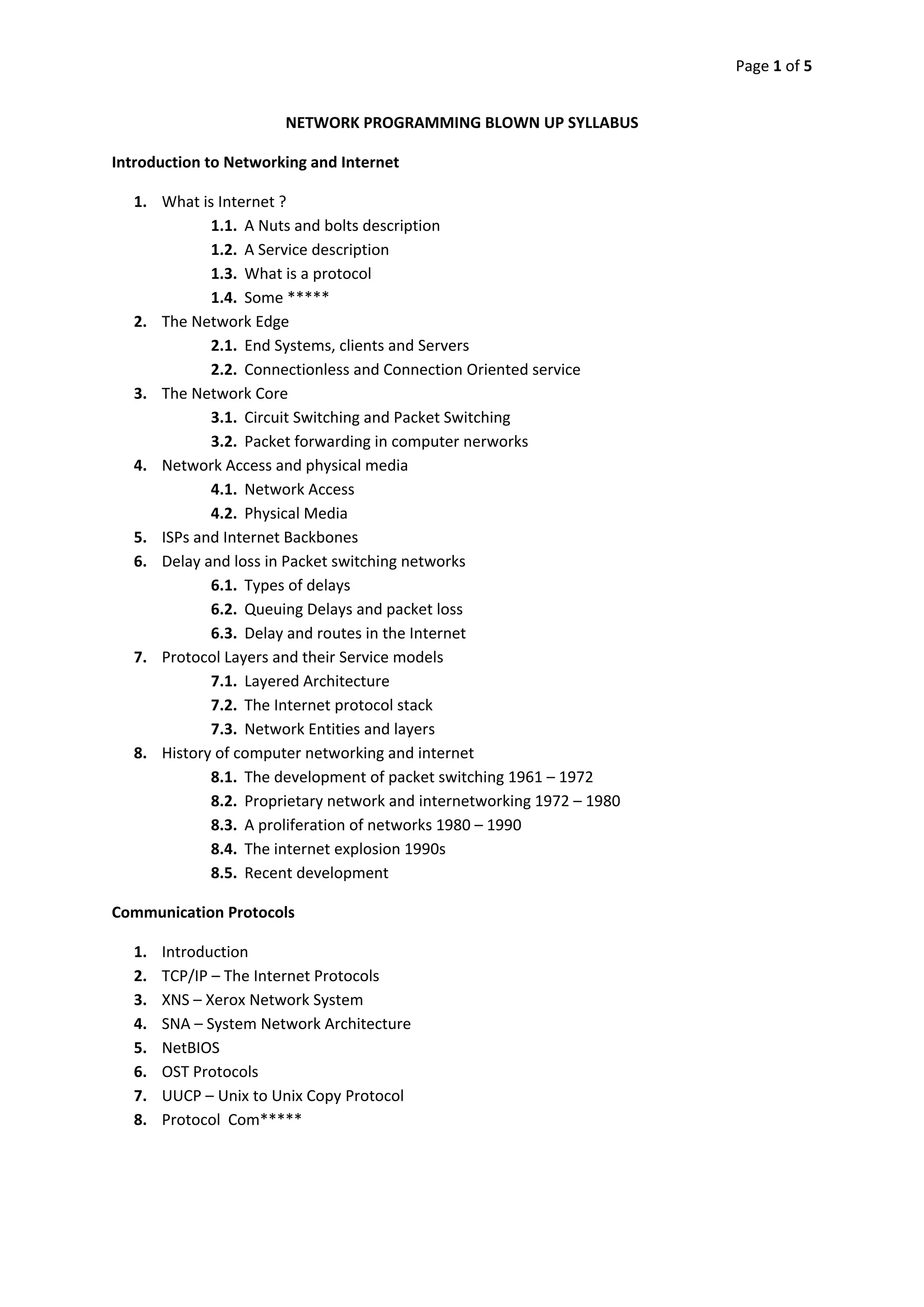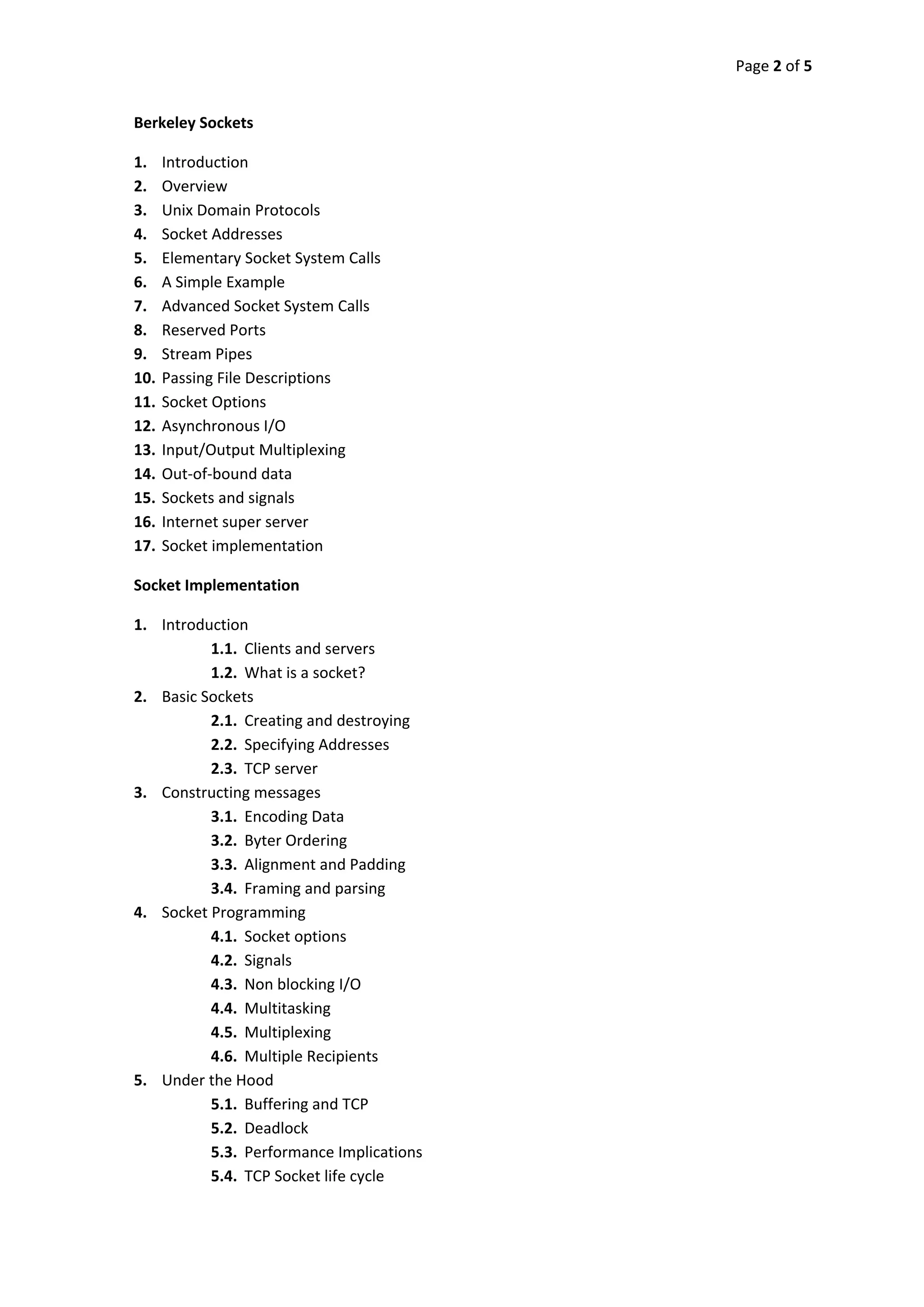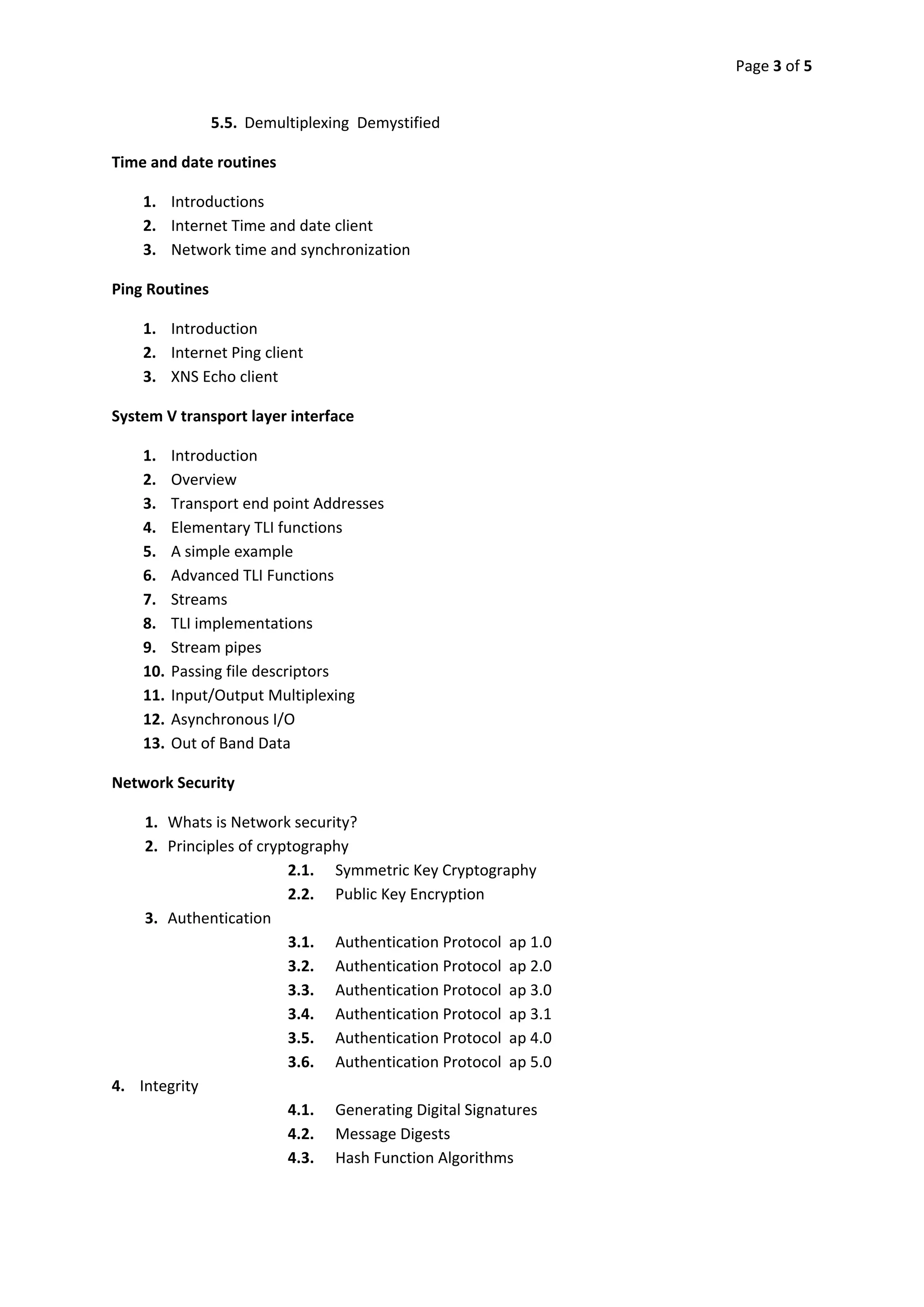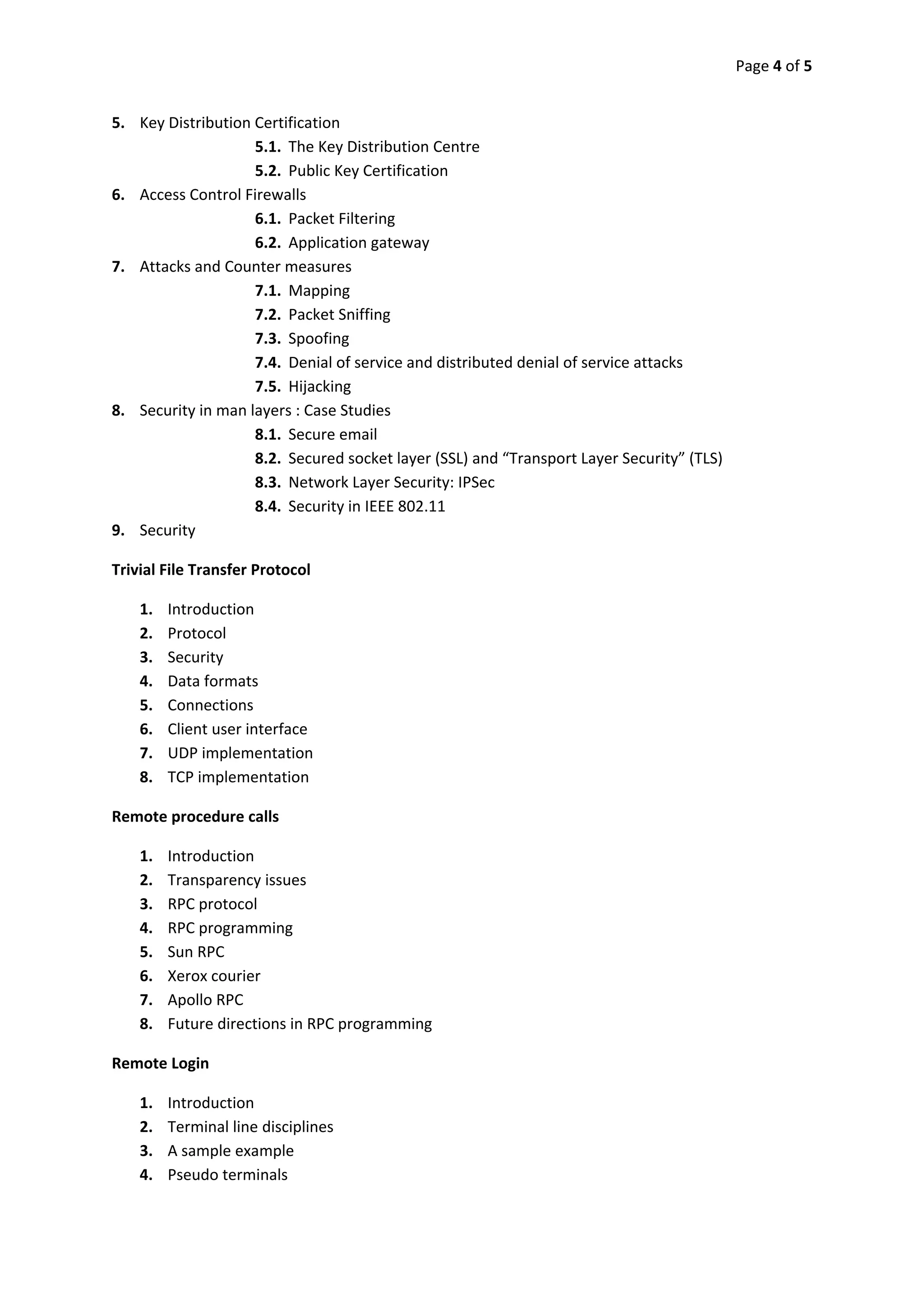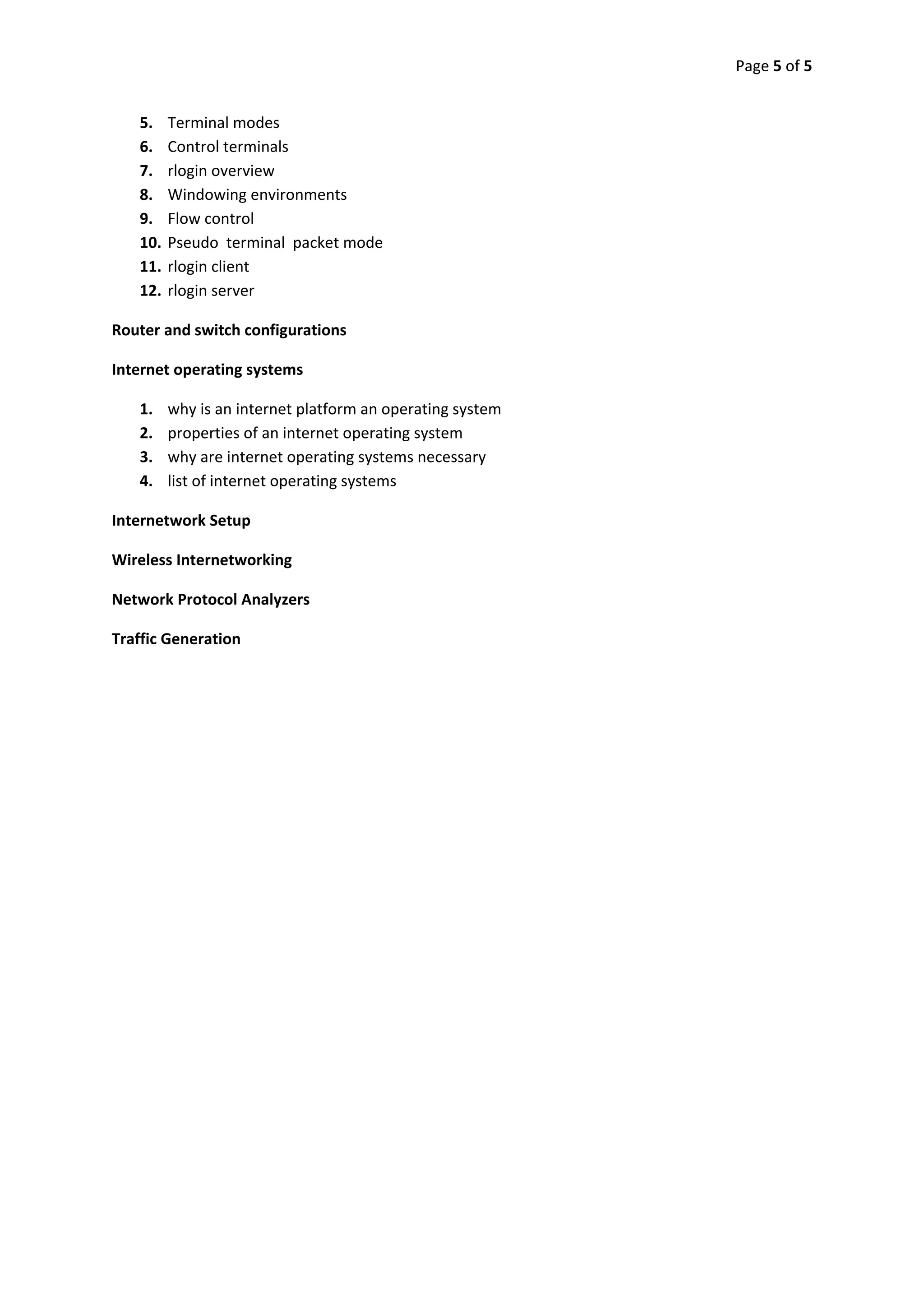This document outlines the topics that will be covered in a networking and protocols course, including introductions to networking concepts like the Internet, protocols, sockets, security, and remote access. Specific topics that will be discussed include TCP/IP, packet switching, physical media, protocol layers, the history of networking, socket programming, authentication, encryption, and network analysis tools. The course appears to provide an in-depth overview of computer networking from the ground level up.
